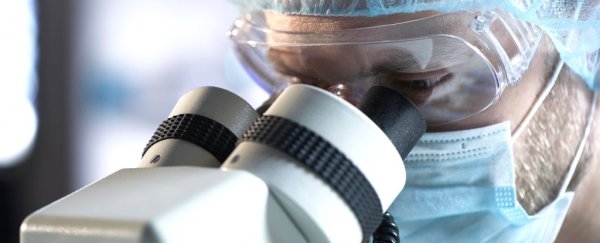It's one of the most confronting operations you could ever imagine: complex brain surgery where neurosurgeons insert electrodes deep inside your head, and you have to remain fully conscious the whole time.
In fact, deep brain stimulation (DBS) is so invasively intense, many patients can't face the ordeal – which is a terrible outcome, since it's one of the most effective treatments we have for Parkinson's disease.
Now, thankfully, we've got an amazing workaround that's a lot less terrifying – and it's entirely based on brainwaves.
"Deep brain stimulation can dramatically improve the quality of life for people living with Parkinson's disease as it alleviates its three major debilitating symptoms: tremors, stiffness, and slowed movement," says medical bionics researcher Hugh McDermott from the Bionics Institute in Australia, affiliated with the University of Melbourne.
Unfortunately, researchers estimate only about 10 percent of Parkinson's patients that would benefit from the procedure end up electing to take it, simply because they don't want to have to be awake through the whole experience.
Why do patients need to be conscious during the surgery? It's to help guide surgeons as they implant electrodes designed to stimulate a very tiny part of the brain – only as large as a grain of rice. Effectively, kind of like putting a neural pacemaker inside your head.
That vocal guidance, like the placement of the electrodes, is crucial to making DBS work.
"For the surgery to be successful we need to hit the top of the 'grain of rice'," one of the team, neurologist Wesley Thevathasan, explained to the ABC.
"If we miss it by a millimetre we get away with it, if we miss it by 2mm the operation is a failure and we would have to do it again."
Luckily, the researchers discovered a unique substitute to patient feedback – one that can help guide their surgical aim, all while letting their patients sleep through the distressing procedure.
To find it, the team recorded the brainwaves of 19 patients undergoing electrode implantation: 14 with Parkinson's disease, and five who had a different kind of movement disorder called essential tremor.
By studying data obtained from electrodes implanted in the brain, they discovered that the part of the brain they're targeting during DBS – called the subthalamic nucleus (STN) – produces a distinct brain signal that's different from neural activity generated by other brain structures.
By treating this brain signal like a kind of homing beacon, the researchers say it's possible to accurately hone in on the STN during DBS surgery, while ignoring the din of background noise generated by other neural activity.
"We've got these little signals that are absolutely minuscule," says Thevathasan, "and this signal that we found is many orders of magnitude bigger, and therefore makes an ideal marker of where we are and if it's working."
While it may be a few years before this procedure becomes available, when it is an option it means DBS will be possible while patients are blissfully anaesthetised. All the benefits of the implants, without the ordeal of witnessing (and even assisting) their own highly invasive brain surgery.
With that significant psychological barrier removed, many more people might now elect to undergo DBS.
The researchers say with what they've learned here, it will help them develop new implants, including electrodes that may be able to detect changes in the brain signal and adjust treatment in real time.
In either case, we could be looking at a huge, transformative win for Parkinson's treatment, helping restore the power of controlled movement to thousands of people who've had it slowly taken away from them.
"It's made such a difference to my daily life – I'm human again," says one of Thevathasan's patients, 49-year-old Grant Rowe.
"I can put sugar in my cup of tea without spilling it, and my mum says she can now hug me without it feeling like she's hugging a statue."
The findings are reported in Annals of Neurology.
